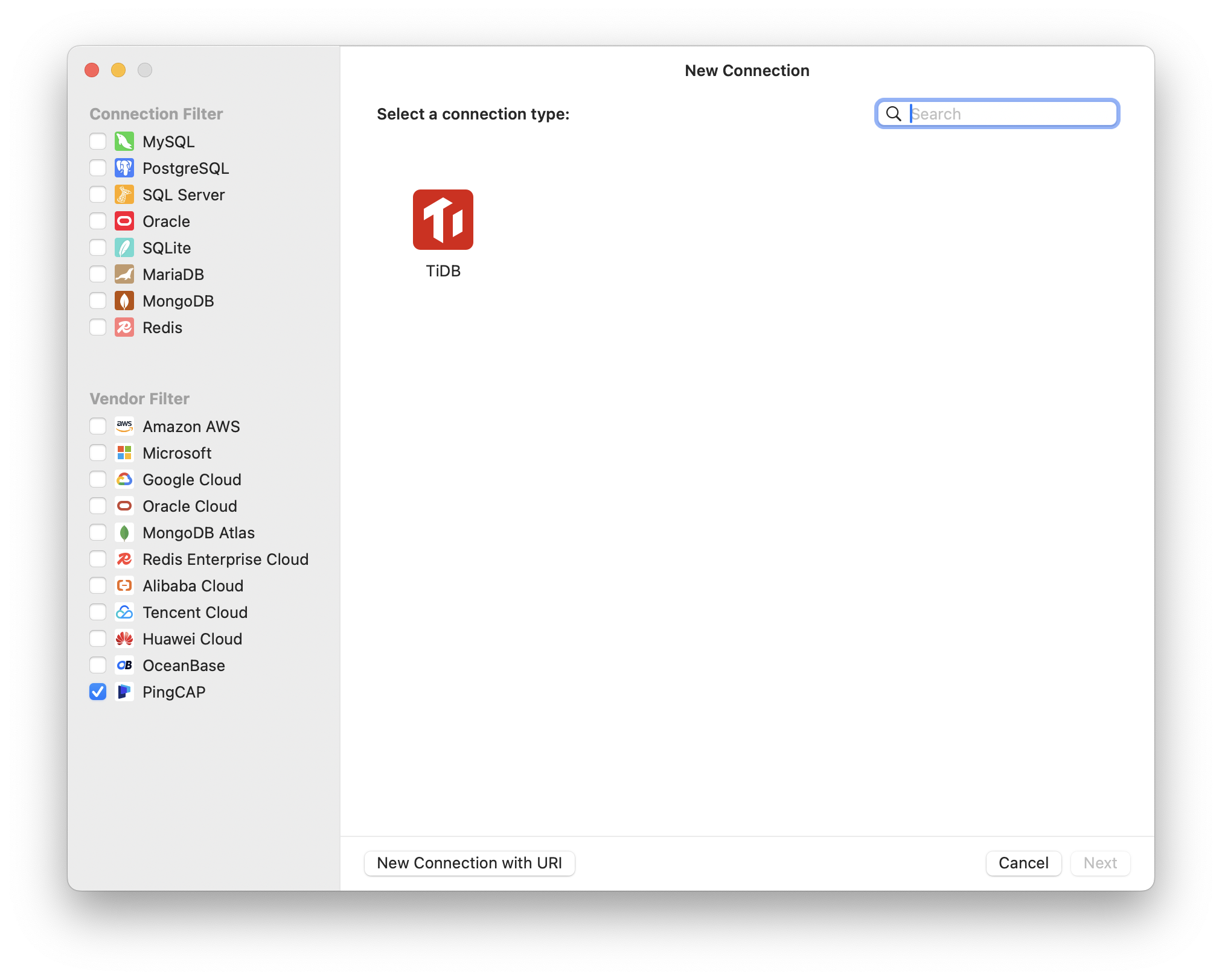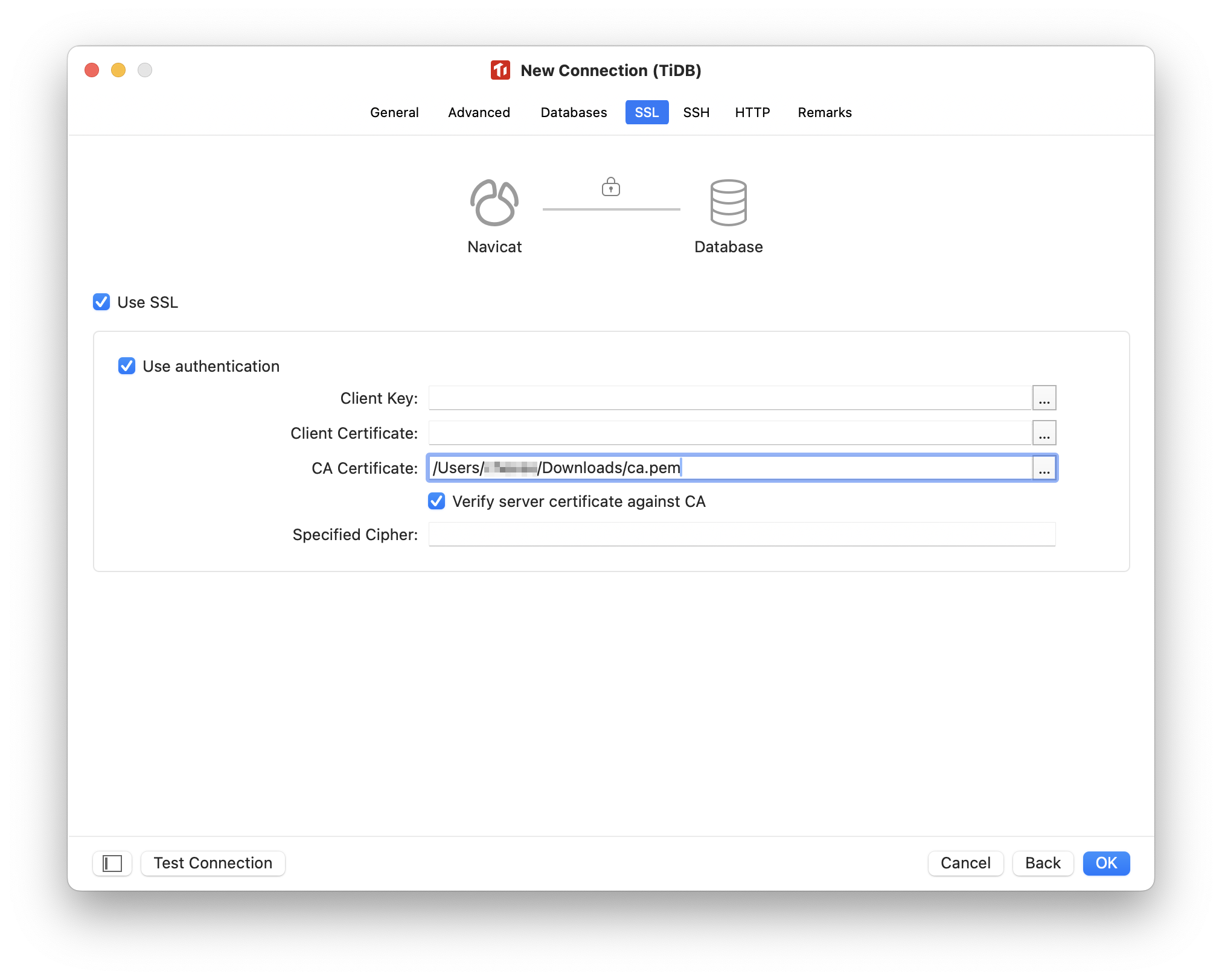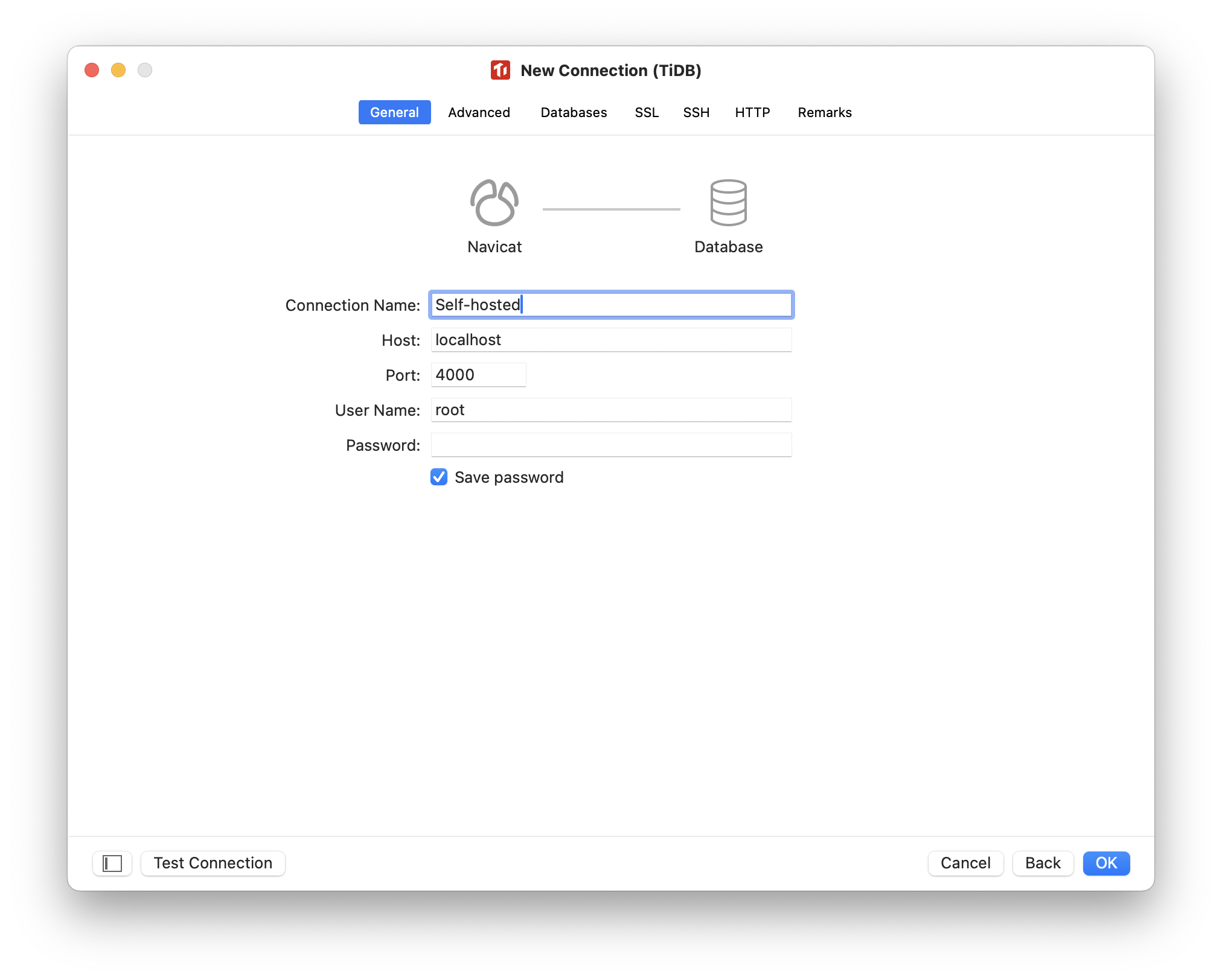Connect to TiDB with Navicat
TiDB is a MySQL-compatible database, and Navicat is a GUI tool set for database users. This tutorial uses the Navicat Premium tool to connect to TiDB.
In this tutorial, you can learn how to connect to your TiDB cluster using Navicat.
Prerequisites
To complete this tutorial, you need:
- Navicat Premium 17.1.6 or later versions.
- A paid account for Navicat Premium.
- A TiDB cluster.
If you don't have a TiDB cluster, you can create one as follows:
- (Recommended) Follow Creating a TiDB Serverless cluster to create your own TiDB Cloud cluster.
- Follow Deploy a local test TiDB cluster or Deploy a production TiDB cluster to create a local cluster.
Connect to TiDB
Connect to your TiDB cluster depending on the TiDB deployment option you have selected.
Navigate to the Clusters page, and then click the name of your target cluster to go to its overview page.
Click Connect in the upper-right corner. A connection dialog is displayed.
Ensure the configurations in the connection dialog match your operating environment.
- Endpoint Type is set to
Public. - Connect With is set to
General. - Operating System matches your environment.
- Endpoint Type is set to
Click Create password to create a random password.
Launch Navicat Premium, click Connection in the upper-left corner, select PingCAP from the Venfor Filter list, and double-click TiDB in the right panel.

In the New Connection (TiDB) dialog, configure the following connection parameters:
- Connection Name: give this connection a meaningful name.
- Host: enter the
hostparameter from the TiDB Cloud connection dialog. - Port: enter the
portparameter from the TiDB Cloud connection dialog. - User Name: enter the
userparameter from the TiDB Cloud connection dialog. - Password: enter the password of the TiDB Serverless cluster.

Click the SSL tab and select Use SSL, Use authentication, and Verify server certificate against CA checkboxes. Then, select the
ssl_cafile from the TiDB Cloud connection dialog into the CA Certificate field.
Click Test Connection to validate the connection to the TiDB Serverless cluster.
If the connection test is successful, you can see the Connection Successful message. Click OK to finish the connection configuration.
Navigate to the Clusters page, and then click the name of your target cluster to go to its overview page.
Click Connect in the upper-right corner. A connection dialog is displayed.
Click Allow Access from Anywhere.
For more details about how to obtain the connection string, refer to TiDB Dedicated standard connection.
Click Download CA cert to download the CA file.
Launch Navicat Premium, click Connection in the upper-left corner, select PingCAP from the Venfor Filter list, and double-click TiDB in the right panel.

In the New Connection (TiDB) dialog, configure the following connection parameters:
- Connection Name: give this connection a meaningful name.
- Host: enter the
HOSTparameter from the TiDB Cloud connection dialog. - Port: enter the
PORTparameter from the TiDB Cloud connection dialog. - User Name: enter the
USERNAMEparameter from the TiDB Cloud connection dialog. - Password: enter the password of the TiDB Dedicated cluster.

Click the SSL tab and select Use SSL, Use authentication, and Verify server certificate against CA checkboxes. Then, select the CA file downloaded in step 4 into the CA Certificate field.

Test Connection to validate the connection to the TiDB Dedicated cluster.
If the connection test is successful, you can see the Connection Successful message. Click OK to finish the connection configuration.
Launch Navicat Premium, click Connection in the upper-left corner, select PingCAP from the Venfor Filter list, and double-click TiDB in the right panel.

In the New Connection (TiDB) dialog, configure the following connection parameters:
- Connection Name: give this connection a meaningful name.
- Host: enter the IP address or domain name of your TiDB Self-Hosted cluster.
- Port: enter the port number of your TiDB Self-Hosted cluster.
- User Name: enter the username to use to connect to your TiDB.
- Password: enter the password to use to connect to your TiDB.

Click Test Connection to validate the connection to the TiDB Self-Hosted cluster.
If the connection test is successful, you can see the Connection Successful message. Click OK to finish the connection configuration.
Next steps
- Learn the best practices for TiDB application development with the chapters in the Developer guide, such as Insert data, Update data, Delete data, Single table reading, Transactions, and SQL performance optimization.
- Learn through the professional TiDB developer courses and earn TiDB certifications after passing the exam.
Need help?
Ask questions on TiDB Community, or create a support ticket.